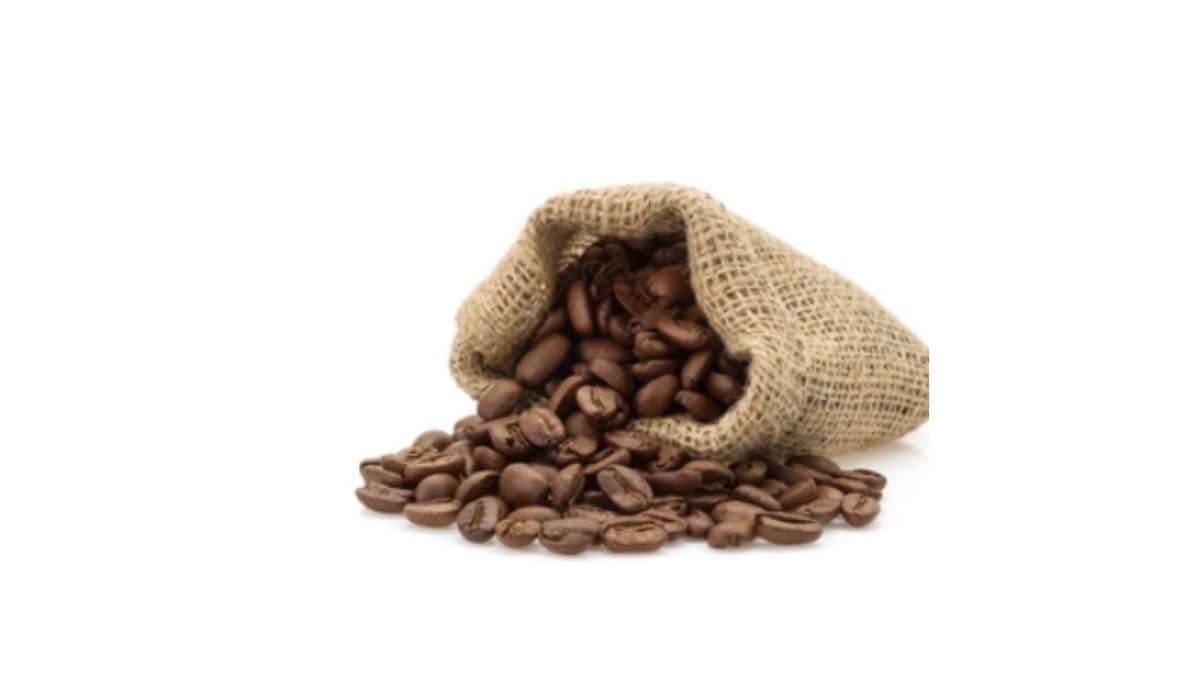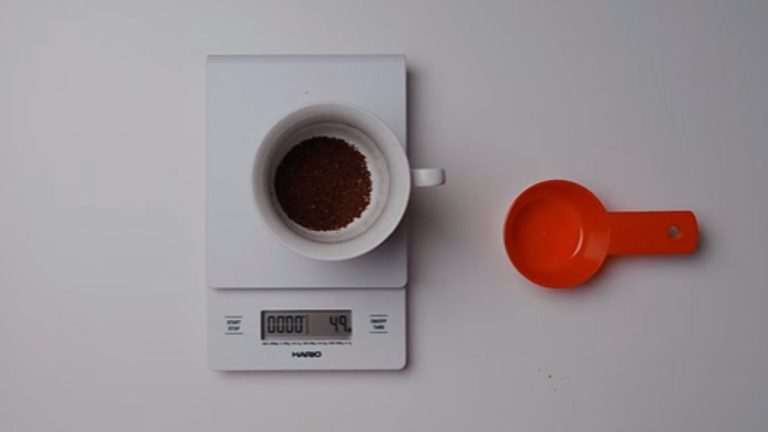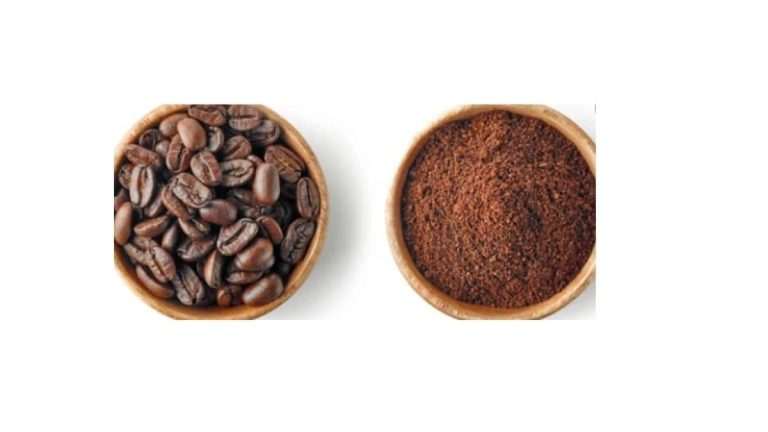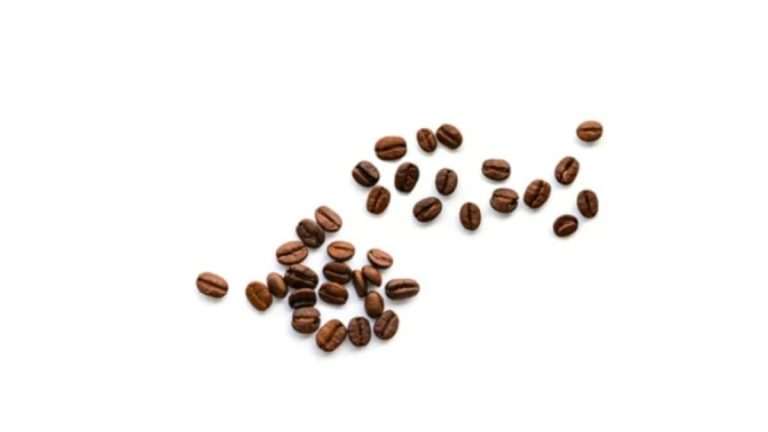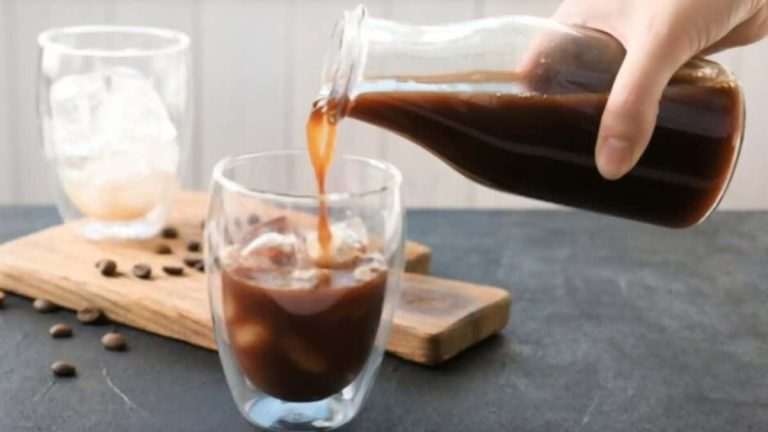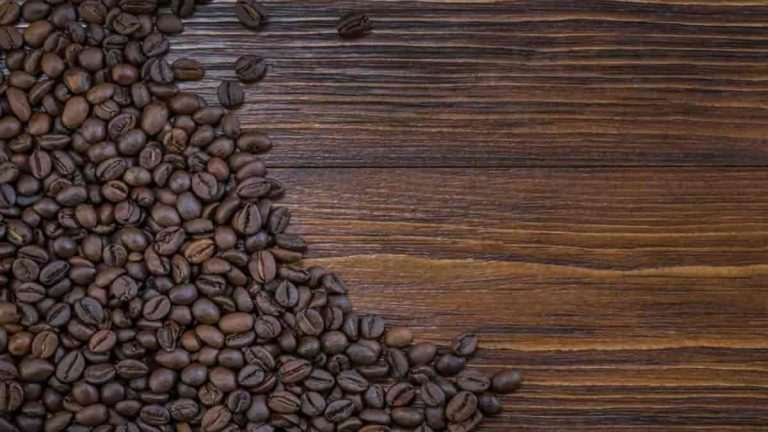What to do with old coffee beans
Coffee is a widely consumed beverage worldwide, and many people love language. When you go through this article, you will find out what to do with old coffee beans and think twice about discarding the grounds that remain after the coffee has been brewed.
Introduction
Table of Contents
It’s awful to have to toss away a pound of beans because they’ve been sitting around for too long and have gone stale. That’s why most people enjoy discovering new ways to protect their old beans from ending up in the garbage.
You can undoubtedly compost them. Because they are thick organic stuff, this is a good usage for them. To avoid wasting entire coffee beans, there are a variety of things you may do with them.
Should I throw away old coffee beans?
Some might say it is something personal; however, you can choose to do something else to your old coffee beans. Composting is a beautiful place to start if you’re searching for a solution to reduce your trash while also helping the environment.
These organic materials begin to degrade over time. When this happens, they decompose into a highly nutrient-dense fertilizer, which you can employ to grow all new organic materials.
The coffee grounds aid in the degradation of the other organic components into something even more helpful and rich, resulting in a fertilizer that is even more successful in growing plants. Instead of just putting your old coffee beans in the garbage, put them in your compost bin; your flowers will appreciate it.
Can old coffee beans be refreshed?
There’s nothing not much you can do to save stale coffee beans once they’ve gone wrong. While you simply can not stop coffee beans from going wrong, you can slow down the process by storing them properly.
A process called oxidation begins when coffee beans are completed being roasted and exposed to oxygen.
The flavour and the aroma of your coffee beans diminish due to oxidation, a chemical reaction.
The oxidation process will be slowed if your coffee beans are protected from air, moisture, heat, and light.
While you won’t be able to restore the coffee beans to their former level of freshness and flavour, there are a few things you may do to disguise the stale flavour.
By combining oils, spices, or extracts with the coffee beans, you may hide the stale flavour while preventing waste.
Cinnamon added to the beans before grinding is a simple way to revitalize stale coffee beans. The amount of cinnamon you use is mainly determined by your personal preferences.
Vanilla extract can be added to the coffee beans or grounds to help conceal the stale taste.
You can also use the following items:
- Olive Oil (Almond)
- Syrup with a coffee flavor
- Oil from Black Walnuts
- Syrup made from maple trees
- Honey
To flavor the coffee beans, you can also experiment with different syrups and coffee flavorings.
How many times can you use coffee grounds?
It’s enough to do it once. It’s better if you only used your coffee grounds for brewing once. If you don’t have any fresh grounds, you can utilize the coffee grounds to make cold brews.
However, don’t forget that you will reap the majority of the benefits the first time. All that’s left are minor amounts of nice flavors with a lot of off-flavors. The odd element is that the off-flavors aren’t mixed in with the first brewing until you’re looking for a re-run. On the second brewing, a cold brew can still extract a lot of flavor.
You might question if you can get away with brewing coffee more than once if you’re trying to cut down on some non-essential expenses and save money. Although that is a legitimate thought, we do not encourage it. When you utilize coffee grounds, the majority of the oils and chemicals contained have already been extracted, and there isn’t much left to make a delicious cup of coffee.
Can you use old coffee beans for cold brew?
You can make cold brew with coffee grounds twice! However, you can be confident that the first coffee brew will have a considerably fuller flavor than the second. The caffeine content of the first brew will be significantly higher than that of the reused coffee grounds.
It is preferable to reuse with a cold brew over any other type of brewing. The spent coffee grounds can still make a nice drink, but it will never be as good as the first brew. Aromas, rich flavors, and oils were extracted from the coffee grounds the first time you consumed them. The second batch has a lot less to offer than the first.
How many times can you use coffee grounds for cold brew
It’s enough to do it once. It’s better if you only used your coffee grounds for brewing once. If you don’t have any fresh grounds, you can utilize the coffee grounds to make cold brew.
Can unused coffee grounds be used in the garden?
Fresh coffee grounds are also supposed to reduce weeds due to their allelopathic qualities, which are harmful to tomato plants. Another reason to be cautious when using it. Some fungal pathogens, however, may be inhibited as well.
As with discarded coffee grounds, sprinkling dry, fresh grounds around plants (and on top of soil) can discourage some pests. While it doesn’t eliminate them, it appears to help keep cats, rabbits, and slugs at bay, reducing their garden damage. As previously noted, this is thought to be due to the caffeine concentration.
To avoid any concerns with the caffeine included in fresh, unbrewed coffee grounds, which can be harmful to plants, you may wish to use decaffeinated coffee or just apply fresh grounds sparingly. Coffee grinds and gardening are a natural match.
Whether you’re composting coffee grounds or spreading unused coffee grounds throughout the yard, you’ll find that coffee may give your garden a boost just as it does you.
How long can you keep coffee beans?
Coffee has a variety of delicate oils, smells, and flavor molecules, all of which are carefully kept within the bean. When they’re roasted, the smells and oils start to rise to the top, and some of them are released.
The surface area expands dramatically when they’re ground, exposing even more oils and fragrances to the air. As a result, ground coffee spoils significantly faster than whole beans.
After three weeks, whole coffee beans lose their freshness, while ground coffee might go stale within an hour of grinding. By keeping them away from extra air, moisture, heat, and light, you can slow down the rate at which they grow stale.
How to refresh old coffee beans
Transfer the coffee beans or grounds to an airtight container; avoid using plastic or metal containers since these will alter the coffee’s flavor.
Place your container in a dark, dry place, such as the bottom shelf of the pantry or a rarely-used cupboard.
If you have a significant quantity of beans or grounds that you won’t use right away, split them out into minor amounts, seal them in airtight packaging, and freeze them for up to a month.
Vanilla’s smooth, savory, sweet flavor complements coffee, balancing out the bitter or flat flavors of stale coffee.
To make an 8-ounce cup of coffee, add roughly a quarter teaspoon vanilla extract to the grounds before brewing or to the beans before grinding. Depending on your preferences, you can add more or less.
For a more pure vanilla flavor, use a vanilla pod instead of extract if possible. One pod should provide for an 8-ounce cup of coffee.
Add it to your beans or grounds, whether it’s a pod or an extract, and let it soak overnight for a fuller vanilla taste in the morning.
These two spices are traditional coffee companions, and when added to beans or grinds before brewing, they can brighten the final cup.
Before grinding the beans or brewing the grounds, add roughly 1/8 teaspoon cinnamon or nutmeg per 6-ounce cup of coffee. Depending on your preferences, you can add more or less.
Try combining cinnamon and nutmeg in your beans or grounds, but don’t use too much at first; start with 1/8 teaspoon of each and work your way up.
Although it may seem unusual, adding salt to coffee beans or grounds lessens the harsh flavor of a stale cup of coffee without making it seem salty.
Before grinding the beans or brewing the grounds, sprinkle roughly 1/8 teaspoon of salt per 6-ounce cup of coffee over them. Depending on your preferences, you can add more or less.
Sea salt is slightly less salty than table salt.
What to do with coffee beans you don’t like
If you do not like your coffee beans here are some ideas for you:
- Get Rid of Fleas on Your Pet
Fleas are a frequent problem in pets, and treating them may be expensive and time-consuming.
Many flea-removal solutions are available, but many of them include harsh chemicals that might cause unpleasant side effects.
Fleas don’t appear to like coffee; therefore, you may use coffee grounds as a natural flea cure.
After shampooing, simply rub the grinds throughout your pet’s fur. Then, as usual, rinse them off and let your pet air dry.
Some argue that doing so will give your pet’s coat more smoothness and gloss; there is, however, little to no evidence to support any of these claims.
On the other hand, maybe coffee grounds are less successful than a prescription flea medication; if this treatment does not work for your pet, you should visit a veterinarian to discuss additional options. Additionally, coffee grounds should only be used outside. If consumed, they can be hazardous to dogs.
- It can be used as a natural cleaning scrub.
Because coffee grounds are abrasive, they can aid in the removal of buildup on difficult-to-clean surfaces. Because of their antibacterial and antiviral capabilities, they may even assist in sanitization.
If you prefer not to use chemicals when cleaning, leftover coffee grounds might be worth a go.
Scrub your sink, polish your kitchenware, and clean your barbecue with them. Use caution when using them on porous surfaces since they may leave black stains.
- It can be used as a natural cleaning scrub.
Because coffee grounds are abrasive, they can aid in the removal of buildup on difficult-to-clean surfaces. Because of their antibacterial and antiviral capabilities, they may even help in sanitization.
If you prefer not to use chemicals when cleaning, leftover coffee grounds might be worth a go.
Scrub your sink, polish your kitchenware, and clean your barbecue with them. Just be careful not to use them on porous surfaces since they might leave dark stains.
- Coffee beans can be used as a natural dye.
If you’ve ever spilt coffee on a white shirt, you’re well aware of the stain potential. You may make an affordable and all-natural dye by rewetting leftover coffee grounds. It can be used to color cotton, rayon, cellophane, linen, and paper.
This is a simple way to provide a vintage look to fabrics and paper and hide stains on your clothes and towels.
Coffee grounds can even be used to tint Easter eggs or darken dark hair. Hundreds of chemicals can be found in commercial food and hair colors, many of which are cancer-causing. Traditional dyes can be replaced with used coffee grounds as a non-toxic alternative. If you’ve colored a piece of fabric or yarn that will be worn or used for sewing or knitting, wash it first in cold water with a very mild laundry detergent.
- Make Your Fireplace Sparkle
Cleaning the ashes from a wood-burning fireplace may be a nightmare. You may weigh down the ashes and prevent smoke clouds from forming by distributing used coffee grinds over them.
This makes it simpler to remove the ashes and prevents dust from escaping and spreading around the room.
- Remove the odour
When nitrogen is mixed with carbon in coffee grinds, it helps to remove a foul-smelling sulfur gas from the air. To put it another way, coffee grinds can aid in the absorption and elimination of odors.
To neutralize aromas from rotten or scented foods, keep a bowl of coffee grinds in your fridge or freezer. You may also manufacture portable air fresheners by filling old socks or pantyhose with coffee grounds and tying them off. Put these in your shoes, gym bag, drawers in your bedroom, beneath your car seat, or anywhere else that needs to be deodorized.
Coffee grounds can also be kept near the sink and used to scrub your hands after cutting garlic or onions. The grounds will aid in the removal of the odor from your hands.
- Tenderize your meat
As we know, meat is made up of muscle fibers and proteins, giving it a rough texture. Meat tenderization aids in the breakdown of proteins, resulting in a softer texture.
Natural meat tenderizers include salt, enzymes, and acids. Coffee contains natural acids and enzymes that aid in the tenderization of meat.
Coffee’s acidity can also aid to improve the flavor of the meat. Simply combine discarded coffee grounds with your preferred dry-rub recipe and rub the beef two hours before cooking. The coffee grounds will cook into the meat, resulting in a dark, crispy crust.
You may also rebrew discarded coffee grounds, cool them, and use them to marinate meat in the refrigerator for a day before cooking.
- You can get rid of your under-Eye Circles
The skin around the eyes is exceedingly fragile, and there is very little fat tissue there. As a result, it’s one of the first locations where you’ll notice indications of age.
Fragile blood vessels, poor circulation, and poor skin quality can contribute to dark circles and puffiness beneath the eyes.
Because of their high antioxidant and caffeine content, coffee grinds appear to be a feasible alternative.
Antioxidants and caffeine in skincare products have been shown in studies to help prevent the appearance of aging and minimize under-eye circles.
Caffeine, in particular, has anti-inflammatory qualities and improves blood circulation around the eyes, which can aid in the reduction of dark circles and swelling.
Coffee’s antioxidants may also aid in the battle against free radicals, which contribute to skin aging. To make a paste, simply add water or coconut oil to your coffee grounds. Apply the solution beneath your eyes and leave it on for 10 minutes before rinsing. Repeat this step as needed or daily.
Conclusion
After brewing coffee, most people throw away the grounds that remain. There are, however, a plethora of fantastic methods to repurpose them.
It is feasible to create more coffee by reusing ground beans, but you will not receive the ideal coffee cup that you desire. The cold brew method is your best and most suitable re-brewing alternative if you still need to reuse.
Coffee grinds include caffeine and antioxidants that may help fight cellulite, dark bags under the eyes and other indications of aging skin.
Coffee grounds are also high in nutrients to help plants grow, and pests stay away from your garden. Furthermore, their abrasiveness makes them an excellent cleaning scrub.
Consider reusing the grounds from your next cup of coffee using one of the suggestions in this article.

